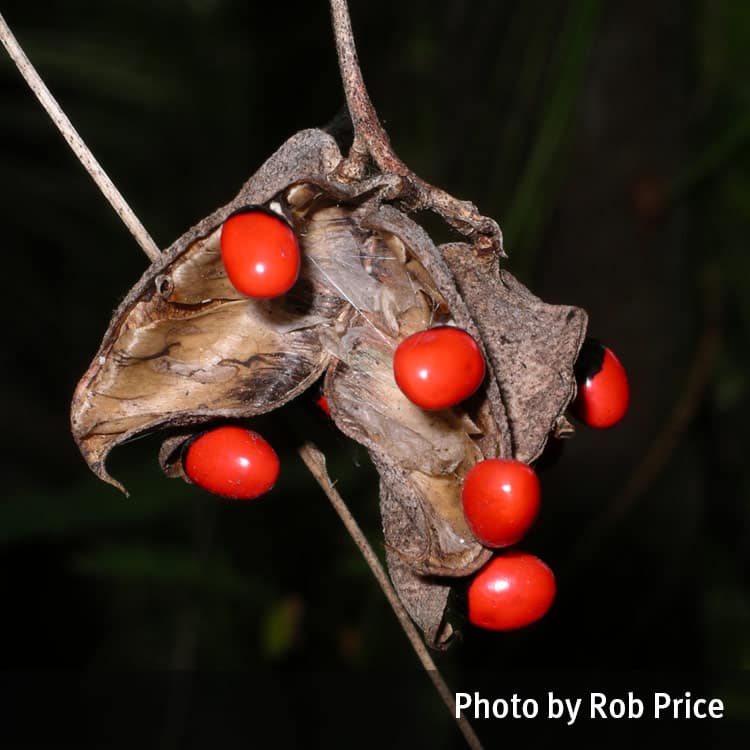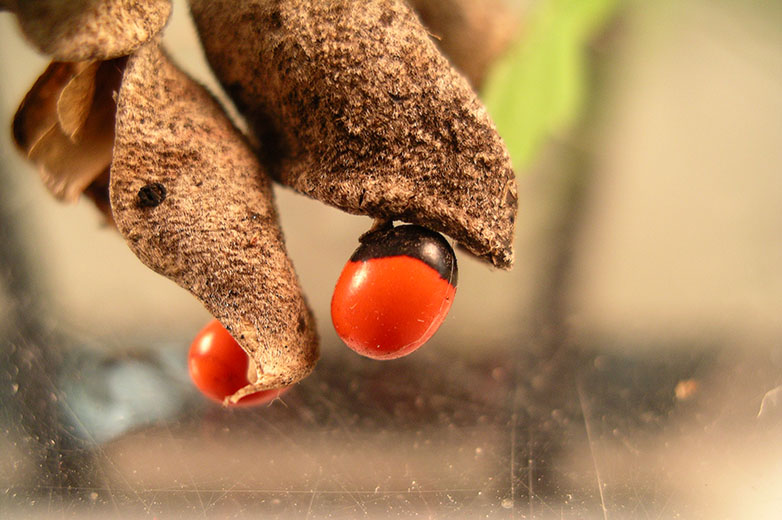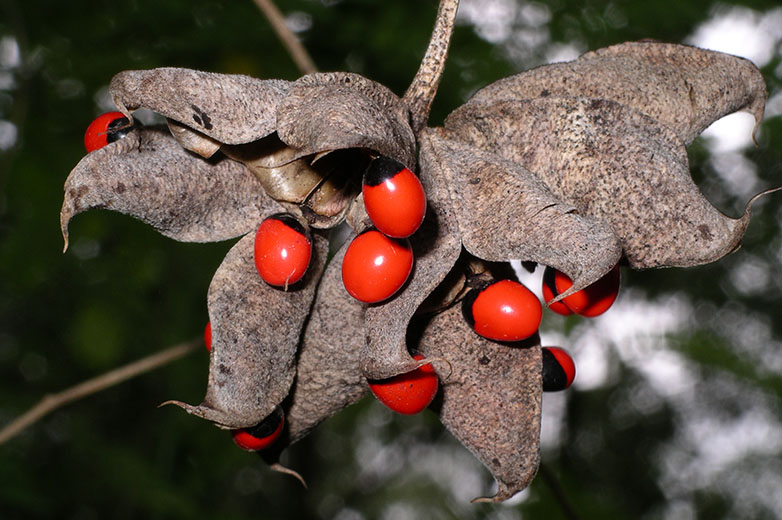Warning
Seek urgent medical attention for any ingestion.
Description
This subspecies is native to tropical Africa.
The leaves are alternating on the stem, with 7–15 pairs of oblong leaflets that are 6–25mm long and 2–8mm wide.
The fruit are pods 4–5cm long, and about 12mm wide, dark grey, splitting to reveal bright red and black seeds when ripe. The seeds are about 6mm long, rounded or ovoid, hard and shiny. The seed can sometimes be white and unspotted.
Toxicity
Symptoms
Chewed or broken seeds are toxic when ingested. One seed contains sufficient toxin to kill an adult. However, if the seed remains unbroken then the toxin may not be released. Symptoms can include nausea, vomiting, severe diarrhoea, disorientation and death. Symptoms may be rapid or delayed 1–3 days.
Images



Details
Common name: Crab’s eye
Botanical name: Abrus precatorius
Other common names: Gidee-gidee, Jequirity bean, Rosary pea, Precatory bean
Family: Fabaceae
General description: This subspecies is native to tropical Africa.
Flowers: The pea flowers are 1–1.2cm long, pink, white or purple.
Leaves: The leaves are alternating on the stem, with 7–15 pairs of oblong leaflets that are 6–25mm long and 2–8mm wide.
Fruit/Berries: The fruit are pods 4–5cm long, and about 12mm wide, dark grey, splitting to reveal bright red and black seeds when ripe. The seeds are about 6mm long, rounded or ovoid, hard and shiny. The seed can sometimes be white and unspotted.
Other: The sap is clear.